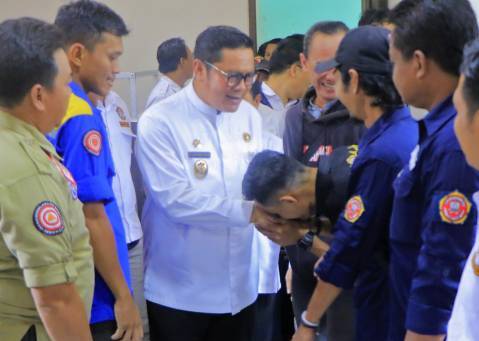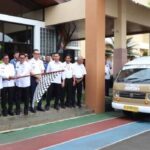TANGERANG – The Youth Organization (Karang Taruna) is expected to become a new force in local economic development and youth self-reliance through the creative economy and MSME sectors. This expectation was conveyed by the Deputy Mayor of Tangerang during the opening of the Tangerang City Youth Organization Working Meeting at the Social Services Hall.
In his speech, the Deputy Mayor emphasized that youth empowerment cannot be separated from efforts to create economic independence. He stated that Karang Taruna has great potential to pioneer young entrepreneurs based on local potential and sustainability.
“Today’s youth must become economic actors, not just job seekers. Karang Taruna can be a platform for resilient, creative, and solution-oriented young entrepreneurs,” he said.
As a form of support, the Tangerang City Government is ready to collaborate through various youth programs, such as entrepreneurship training, MSME business incubation, digital literacy, and local product development.
“The government cannot work alone. Strong partnerships with Karang Taruna are needed to drive the economy at the community level. We encourage youth to be not only socially active but also economically productive,” he added.
The Deputy Mayor also invited Karang Taruna to leverage digital technology as a bridge for product promotion and marketing, enabling access to broader markets, including at the national level.
Furthermore, he hopes this year’s Karang Taruna Working Meeting will serve as a momentum for launching programs focused on community-based economic empowerment and supporting the growth of millennial MSMEs in Tangerang City.
“This meeting should not stop at discussions. It must produce tangible actions with direct impact. We want the youth of Tangerang to be independent, creative, and contribute concretely to the economy,” he concluded.
TANGERANG – The Mayor of Tangerang highlighted the importance of ensuring all buildings in the city are not only physically appealing but also legally compliant and technically safe. He conveyed this during the Socialization Event for Building Approval (PBG) and Certificate of Occupancy (SLF) held at the Akhlakul Karimah Room, Tangerang City Government Center.
Addressing 154 participants from various business sectors, including housing developers, hospitality, offices, construction services, and healthcare facilities, the Mayor emphasized that urban planning cannot be done partially but requires collaboration between the government and the community, especially businesses directly involved in physical development.
“Building legality is not just administrative paperwork but a legal and technical guarantee that the structure is safe for occupants and the surrounding environment. This is our shared responsibility,” he said.
As part of public service innovation, the Tangerang City Government continues to improve licensing services through legal approaches and digital technology, such as the Building Management Information System (SIMBG). This system enables online submission and issuance of Building Approvals (PBG) and Certificates of Occupancy (SLF), making the process faster, transparent, and efficient.
By mid-2025, the Tangerang City Government had issued 4,965 PBGs and 166 SLFs. Since the introduction of fast-track services in 2024, approval time for simple buildings was reduced from 45 days to just 10 hours, demonstrating the government’s commitment to responsive and adaptive solutions.
“Through this socialization, we hope all development in Tangerang complies with regulations, supports orderly spatial planning, and creates a safe, organized, and investment-friendly city,” the Mayor added.
He stated that the event also serves as education and an invitation for businesses to become strategic partners in realizing orderly, sustainable urban planning and a healthy investment climate.
“We urge all businesses to actively contribute to creating a regulated, compliant, and safety-oriented urban environment. This is not just about permits but also social responsibility,” the Mayor concluded.
Echoing the Mayor, the Deputy Mayor expressed hope that through socialization and various innovations introduced by the government, collaboration between the government, community, and businesses will strengthen efforts to make Tangerang a livable and investment-ready city.






